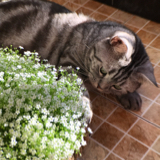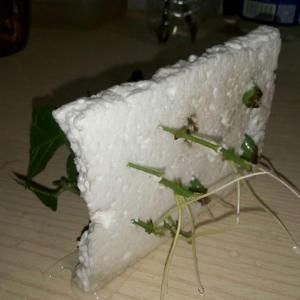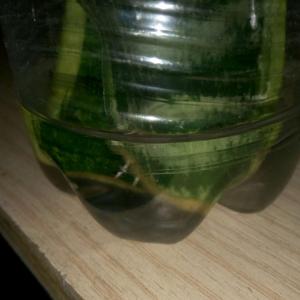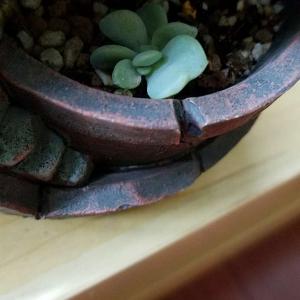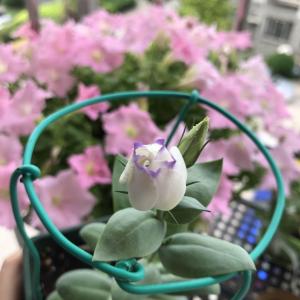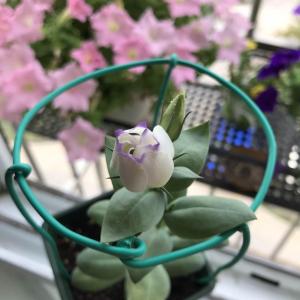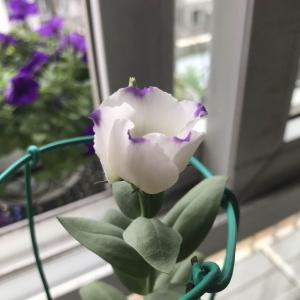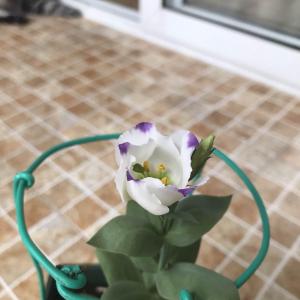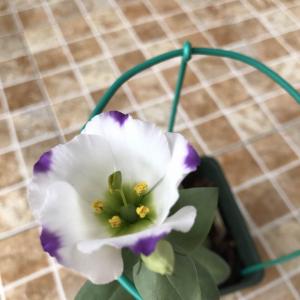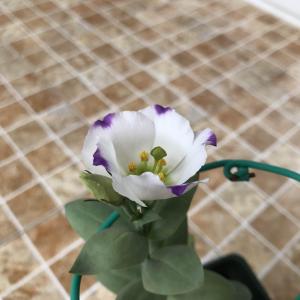文章
玲儿
2017年08月06日

西洋オダマキの育て方・栽培方法
育て方のポイント
栽培環境・日当たり・置き場
午前中は日なた、午後は明るい日陰になる場所で栽培します。7月から9月上旬の間は30~40%の遮光下に置いて葉焼けや高温障害を防ぎます。冬は北風が当たらないような場所に置きます。庭植えにする場合は、10~20cm盛り土した上に植えます。
水やり
表土が乾いたら十分に与えます。庭植えの場合は、晴天が続いて乾燥していないかぎり必要ありません。
肥料
植え替えの際に、元肥としてリン酸とカリウムが多めの緩効性化成肥料を、4号鉢で三つまみ施します。3月から9月は、週1回、液体肥料を1500~2000倍に薄めて施します。真夏の間は3000倍程度にしたほうが無難です。

病気と害虫
病気:うどんこ病
主に夏前に発生します。葉の表面に白っぽい粉(胞子)をふく前に葉ごとちぎって処分します。被害がひどい場合は、一度葉を切り捨てて再生させます。
害虫:ヨトウムシ、ハダニ、アブラムシ
ヨトウムシは夜間に現れ、葉や若い蕾を暴食します。5月前後と9月前後の春秋2回を中心に発生し、温暖な地域では1年中発生する場合があります。ハダニは暑くなる夏を中心に発生し、葉が白くかすれたようになります。

用土(鉢植え)
水はけのよい土であれば土質を選びません。赤玉土小粒7、腐葉土3の配合土のほか、市販の草花用培養土でもよく育ちます。心配な場合は、鹿沼土、赤玉土、軽石の各小粒を等量配合したもので植えてもよいでしょう。庭植えの場合は10~20cmほど盛り土してから植えると、生育がよくなります。
植えつけ、 植え替え
毎年、または1年おきに行います。適期は芽が出る直前の2月から3月の上旬です。実生苗は成長に合わせて時期を問わず植え替え(鉢増し)を行います。その際、太いゴボウ状の根は傷つけないように注意しましょう。

ふやし方
タネまき:6月から7月に採取したタネを、冷蔵庫で保管して翌年の2月から3月上旬にまきます。発芽率はよいので密まきにならないように注意します。まいたタネは順調であれば2年目に開花します。
株分け:植え替えと同時に行います。古くなった根茎を、自然に分かれている部分で分けます。もしつながっていても、それぞれの芽に十分に根があるのならナイフなどで切り分けてもかまいません。その場合、切り口には癒合剤や殺菌剤を塗って保護しておきます。

主な作業
花がら摘み・花茎切り:タネをとる目的がないなら、大部分の花が咲き終わった段階で花茎を切り取ります。どこで切っても問題ありませんが、根元の葉は残しておきましょう。
タネの採取:6月から7月に熟して先端が開いた果実を取って、タネを集めます。オダマキの仲間はたいへん交雑しやすいので、複数種のオダマキの仲間を栽培している場合は袋かけをして自分で交配するか、タネとり用の親株は隔離しておきましょう。
育て方のポイント
栽培環境・日当たり・置き場
午前中は日なた、午後は明るい日陰になる場所で栽培します。7月から9月上旬の間は30~40%の遮光下に置いて葉焼けや高温障害を防ぎます。冬は北風が当たらないような場所に置きます。庭植えにする場合は、10~20cm盛り土した上に植えます。
水やり
表土が乾いたら十分に与えます。庭植えの場合は、晴天が続いて乾燥していないかぎり必要ありません。
肥料
植え替えの際に、元肥としてリン酸とカリウムが多めの緩効性化成肥料を、4号鉢で三つまみ施します。3月から9月は、週1回、液体肥料を1500~2000倍に薄めて施します。真夏の間は3000倍程度にしたほうが無難です。

病気と害虫
病気:うどんこ病
主に夏前に発生します。葉の表面に白っぽい粉(胞子)をふく前に葉ごとちぎって処分します。被害がひどい場合は、一度葉を切り捨てて再生させます。
害虫:ヨトウムシ、ハダニ、アブラムシ
ヨトウムシは夜間に現れ、葉や若い蕾を暴食します。5月前後と9月前後の春秋2回を中心に発生し、温暖な地域では1年中発生する場合があります。ハダニは暑くなる夏を中心に発生し、葉が白くかすれたようになります。

用土(鉢植え)
水はけのよい土であれば土質を選びません。赤玉土小粒7、腐葉土3の配合土のほか、市販の草花用培養土でもよく育ちます。心配な場合は、鹿沼土、赤玉土、軽石の各小粒を等量配合したもので植えてもよいでしょう。庭植えの場合は10~20cmほど盛り土してから植えると、生育がよくなります。
植えつけ、 植え替え
毎年、または1年おきに行います。適期は芽が出る直前の2月から3月の上旬です。実生苗は成長に合わせて時期を問わず植え替え(鉢増し)を行います。その際、太いゴボウ状の根は傷つけないように注意しましょう。

ふやし方
タネまき:6月から7月に採取したタネを、冷蔵庫で保管して翌年の2月から3月上旬にまきます。発芽率はよいので密まきにならないように注意します。まいたタネは順調であれば2年目に開花します。
株分け:植え替えと同時に行います。古くなった根茎を、自然に分かれている部分で分けます。もしつながっていても、それぞれの芽に十分に根があるのならナイフなどで切り分けてもかまいません。その場合、切り口には癒合剤や殺菌剤を塗って保護しておきます。

主な作業
花がら摘み・花茎切り:タネをとる目的がないなら、大部分の花が咲き終わった段階で花茎を切り取ります。どこで切っても問題ありませんが、根元の葉は残しておきましょう。
タネの採取:6月から7月に熟して先端が開いた果実を取って、タネを集めます。オダマキの仲間はたいへん交雑しやすいので、複数種のオダマキの仲間を栽培している場合は袋かけをして自分で交配するか、タネとり用の親株は隔離しておきましょう。
0
0
文章
Miss Chen
2017年08月05日


Rosales de gran tamaño, ramificaciones muy libres, con ramilletes compuestos en general por 5-7 flores semidobles a dobles.
Las flores nacen en ramilletes en verano.
Follaje muy abundante y lustroso, verde grisáceo.
Son muy resistentes y adecuados para borduras y también para utilizarlos a modo de ejemplares aislados.
0
0
文章
Miss Chen
2017年08月05日


Description: This perennial wildflower forms a low rosette of basal leaves, from which there develops an erect flowering stalk about 1½-3' tall. The basal leaves are 2-7" long and ¼-1" across; they are lanceolate-oblong, elliptic-oblong, or oblanceolate-oblong in shape and smooth along their margins. The basal leaves are pale green to yellowish green and glabrous; their venation is parallel. Along the lower half of the flowering stalk, there are widely-spaced alternate leaves that are less than 1" long and 1/8" across; they are lanceolate in shape, pale green to yellowish green, glabrous, and thin-textured. The lower half of the flowering stalk is pale green to yellowish green, glabrous, and terete.
Along the upper half of the flowering stalk, is a spike-like raceme of flowers about ½-1½' long. Each flower is 7-10 mm. in length, consisting of a 6 white tepals with slightly recurved tips, 6 inserted stamens, and a pistil. The elongated tepals are joined together, except at their tips, forming a narrow tubular shape. The outer white surfaces of the tepals have a texture that is conspicuously warty-mealy. At the base of each flower, there is a short slender pedicel. At the base of each pedicel, there is a slender deciduous bract about 2-3 mm. in length. The central stalk of the raceme is pale green, shallowly grooved, and often pubescent. The blooming period occurs from late spring to mid-summer, lasting about a month. Afterwards, small ovoid seed capsules develop that become 3-5 mm. in length. Each seed capsule is 3-celled and contains numerous tiny seeds about 0.5 mm. in length. Each seed capsule splits open toward its apex to release the seeds to the wind. The root system consists of stout rootstock that resembles a rhizome; it has fibrous roots below.
Cultivation: The preference is full or partial sun, moist to dry conditions, and very sandy soil. Colic Root is intolerant of competition from taller plants.
Range & Habitat: The native Colic Root occurs in northeast Illinois, where it is uncommon (see Distribution Map). Habitats consist of sand prairies, sandy shrub prairies, sand flats, openings in sandy savannas, and sandy areas along railroads. Open areas with sterile sandy soil are preferred.
Faunal Associations: Apparently very little information is available about floral-faunal relationships for this species. Consumption of excessive amounts of the rootstock is known to cause diarrhea and vomiting in humans.
Photographic Location: An upland sand prairie at the Indiana Dunes National Lakeshore in NW Indiana.
Comments: When Colic Root is in bloom it is very conspicuous because of its tall spike-like racemes of white flowers. These flowers often rise far above the surrounding ground vegetation in the open sandy areas where this species occurs. The low basal leaves, on the other hand, are relatively inconspicuous and easily overlooked. The flowers of Colic Root are quite distinct in appearance because of the warty-mealy outer surface of their tepals. Thus, Colic Root is easily identified when it is in bloom. This is a wonderfully unique wildflower.

0
0
成长记
Ueca
2017年08月05日

A little shoot found when changing the soil. You can just barely see it popping out of the soil at about 7 'o' clock (bottom left).
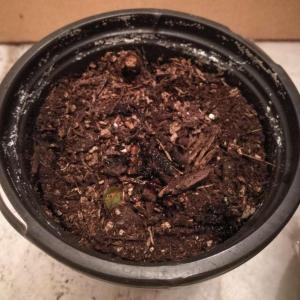

1
0
文章
Dummer. ゛☀
2017年07月29日

Family - Hippocastanaceae
Stems - Woody to 9m tall, with a single trunk or multiple trunks.
Leaves - Opposite, palmately compound, petiolate. Leaflets typically 5, but sometimes 6 or 7, 3-8cm wide, 15cm long, serrate, pubescent below, glabrous above, acuminate. Petiolules to 1cm long.
Inflorescence - Terminal panicle to 20cm long on new season growth. Axis of inflorescence densely pubescent with multicellular hairs. Pedicels pubescent, to 8mm long in flower.
Flowers - Petals 4, pale yellow to creamy whitish, clawed. Claws of upper petals to 3.5mm long, with dense tuft of villous pubescence at apex. Limb of upper petals +1.5cm long, 4mm broad at apex, with reddish spot near base of limb, pubescent. Lower petals with claw to 3.5mm long. Limb of lower petals +1cm long, 8-9mm broad, pubescent. Stamens 7, exserted. Filaments villous, to -2cm long, white. Anthers orange-red, 2mm long. Ovary 6mm long, dense villous at base but glabrous and reddish at apex. Calyx tube to 7mm long, 5mm in diameter, 5-lobed, yellow-green, pubescent. Lobes to 3mm long, obtuse, pubescent. Fruits globose, spiny, 2.5-6cm in diameter. Seeds 2 per fruit, +/-3cm in diameter, shiny, dark brown.
Flowering - April - May.
Habitat - Wooded slopes, ravines, thickets, open, rich woods, also cultivated.
Origin - Native to U.S.
Other info. - This species can be found throughout Missouri but is apparently absent from the extreme southeastern and northwestern corners of the state. The tree is easy to identify because of its palmately divided leaves (which are opposite) and its big inflorescences. The buds are easy to ID in winter also as they are quite large and the tree generally has a widely spreading growth habit. This species deserves to be cultivated more and it grows easily from seed. The fruits of the plant split into 3 parts and the seeds are actually edible. The seeds should be cooked first as they can be mildly toxic if eaten raw.
Stems - Woody to 9m tall, with a single trunk or multiple trunks.

Leaves - Opposite, palmately compound, petiolate. Leaflets typically 5, but sometimes 6 or 7, 3-8cm wide, 15cm long, serrate, pubescent below, glabrous above, acuminate. Petiolules to 1cm long.
Inflorescence - Terminal panicle to 20cm long on new season growth. Axis of inflorescence densely pubescent with multicellular hairs. Pedicels pubescent, to 8mm long in flower.

Flowers - Petals 4, pale yellow to creamy whitish, clawed. Claws of upper petals to 3.5mm long, with dense tuft of villous pubescence at apex. Limb of upper petals +1.5cm long, 4mm broad at apex, with reddish spot near base of limb, pubescent. Lower petals with claw to 3.5mm long. Limb of lower petals +1cm long, 8-9mm broad, pubescent. Stamens 7, exserted. Filaments villous, to -2cm long, white. Anthers orange-red, 2mm long. Ovary 6mm long, dense villous at base but glabrous and reddish at apex. Calyx tube to 7mm long, 5mm in diameter, 5-lobed, yellow-green, pubescent. Lobes to 3mm long, obtuse, pubescent. Fruits globose, spiny, 2.5-6cm in diameter. Seeds 2 per fruit, +/-3cm in diameter, shiny, dark brown.

Flowering - April - May.
Habitat - Wooded slopes, ravines, thickets, open, rich woods, also cultivated.
Origin - Native to U.S.
Other info. - This species can be found throughout Missouri but is apparently absent from the extreme southeastern and northwestern corners of the state. The tree is easy to identify because of its palmately divided leaves (which are opposite) and its big inflorescences. The buds are easy to ID in winter also as they are quite large and the tree generally has a widely spreading growth habit. This species deserves to be cultivated more and it grows easily from seed. The fruits of the plant split into 3 parts and the seeds are actually edible. The seeds should be cooked first as they can be mildly toxic if eaten raw.
0
0
文章
Dummer. ゛☀
2017年07月29日

Family - Violaceae
Stems - Plants acaulescent. Caudex thick, elongated, horizontal, woody, with fleshy roots.
Leaves - Basal. Earliest leaves cordate, acute. Later leaves lobed, sagittate, typically with 5-7 lobes. Petioles to +7cm long, pubescent. Leaf tissue decurrent on petiole for much of it's length but very thin. Blades glabrous above, ciliate below, (especially near base), shallowly serrate to crenate-serrate, +3cm broad and long. Margins typically ciliate.
Inflorescence - Single long-pedunculate flower arising from caudex. Peduncles glabrous, to +12cm long, exceeding the leaves, curved at apex.
Flowers - Petals 5, violet (rarely white) and with some white at base, with deep purple venation, rounded at apex, -2cm long, 7-8mm broad, generally obovate to oblanceolate. Lateral petals heavily bearded. Upper petals also slightly bearded. All petals glabrous externally. Lowest petal saccate at base, (the sac protruding beyond the sepals). Stamens 5, converging around the pistil, to +4mm long. Lower 2 stamens with appendages. Appendages to 3mm long, green. Anther connective orange, expanding beyond the anther, to 1.5mm long. Anthers pale yellow. Ovary superior, green, glabrous, 3mm long, unilocular, somewhat conic. Ovules many. Style 2mm long, greenish white, glabrous, expanded at apex. Stigma truncate, deltoid. Sepals 5, green with scarious margins, lanceolate, acute, to 8mm long, 3mm broad, glabrous, entire but ciliolate. Lowest two sepals with small auricles. Auricles to 1mm long, ciliolate-margined.
Flowering - April - May.
Habitat - Dry rocky open woods, thickets, bluffs.
Origin - Native to U.S.
Other info. - V. triloba is just one of the many small purple-flowered violets you are sure to encounter in the Missouri woods. When young, this plant is difficult to tell apart from other violets, such as V. sororia, but as the plant mature its leaves will become lobed. V. triloba is found mostly in the lower half of the state and prefers acidic soils.
Stems - Plants acaulescent. Caudex thick, elongated, horizontal, woody, with fleshy roots.
Leaves - Basal. Earliest leaves cordate, acute. Later leaves lobed, sagittate, typically with 5-7 lobes. Petioles to +7cm long, pubescent. Leaf tissue decurrent on petiole for much of it's length but very thin. Blades glabrous above, ciliate below, (especially near base), shallowly serrate to crenate-serrate, +3cm broad and long. Margins typically ciliate.

Inflorescence - Single long-pedunculate flower arising from caudex. Peduncles glabrous, to +12cm long, exceeding the leaves, curved at apex.

Flowers - Petals 5, violet (rarely white) and with some white at base, with deep purple venation, rounded at apex, -2cm long, 7-8mm broad, generally obovate to oblanceolate. Lateral petals heavily bearded. Upper petals also slightly bearded. All petals glabrous externally. Lowest petal saccate at base, (the sac protruding beyond the sepals). Stamens 5, converging around the pistil, to +4mm long. Lower 2 stamens with appendages. Appendages to 3mm long, green. Anther connective orange, expanding beyond the anther, to 1.5mm long. Anthers pale yellow. Ovary superior, green, glabrous, 3mm long, unilocular, somewhat conic. Ovules many. Style 2mm long, greenish white, glabrous, expanded at apex. Stigma truncate, deltoid. Sepals 5, green with scarious margins, lanceolate, acute, to 8mm long, 3mm broad, glabrous, entire but ciliolate. Lowest two sepals with small auricles. Auricles to 1mm long, ciliolate-margined.

Flowering - April - May.
Habitat - Dry rocky open woods, thickets, bluffs.
Origin - Native to U.S.
Other info. - V. triloba is just one of the many small purple-flowered violets you are sure to encounter in the Missouri woods. When young, this plant is difficult to tell apart from other violets, such as V. sororia, but as the plant mature its leaves will become lobed. V. triloba is found mostly in the lower half of the state and prefers acidic soils.
0
0
文章
我家狗狗会尖叫
2017年07月28日

巴西龙骨繁殖多用扦插,龙骨为多浆植物,扦插时剪下会流出浆液,可用草木灰封闭,放凉处7天至10天,待植株萎缩后再扦插。一种是将龙骨切段扦插,上下切口均应用草木灰封闭,插穗长度应为20厘米至25厘米。另一种是从龙骨枝上拿下的分枝,晾晒后即可扦插,但太小幼嫩的不易生根,这种插穗只有生根处有小伤口,扦插生根快。
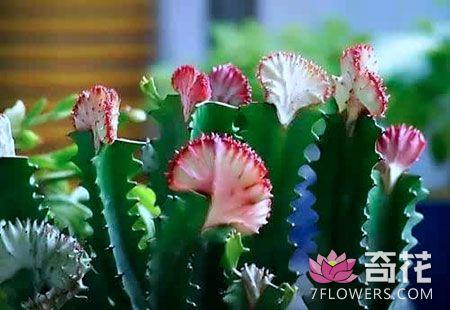
扦插龙骨基质需用蛭石、珍珠粉粒、纯河沙,不掺土。可单株扦插,也可多株集中扦插,插后浇水,只浇至插穗切口处,放阳光充足地方。生根期尽量少浇水,不干不浇,待30天至40天,即可生根。生根后进行移栽,盆土要求1/2河沙和1/2壤土混均后栽入,用2%高锰酸钾水浇入,既做了土壤消毒,又浇了水,植株高的可用支棍绑缚固定。培养时放阳光充足处,仍需控制水量,宁干勿湿为佳。

扦插龙骨基质需用蛭石、珍珠粉粒、纯河沙,不掺土。可单株扦插,也可多株集中扦插,插后浇水,只浇至插穗切口处,放阳光充足地方。生根期尽量少浇水,不干不浇,待30天至40天,即可生根。生根后进行移栽,盆土要求1/2河沙和1/2壤土混均后栽入,用2%高锰酸钾水浇入,既做了土壤消毒,又浇了水,植株高的可用支棍绑缚固定。培养时放阳光充足处,仍需控制水量,宁干勿湿为佳。
0
1
文章
Colour_
2017年07月27日

多年生肉质草本植物,茎粗壮,灰白色,多分枝,叶对生,排列紧密。叶片倒卵形,长10~15厘米,宽5~7厘米,全缘,先端钝圆。叶色淡绿或黄绿,被有浓厚的白粉,因此,看上去呈灰绿色,秋末至初春的冷凉季节,在阳光充足的条件下,叶缘呈红色。小花筒形,黄色,长1.5厘米。原产南非开普省东部和德兰士瓦省。
形态特征
多年生肉质草本植物,茎粗壮,灰白色,多分枝,叶对生,排列紧密。叶片倒卵形,长10~1
5厘米,宽5~7厘米,全缘,先端钝圆。叶色淡绿或黄绿,被有浓厚的白粉,因此,看上去呈灰绿色,秋末至初春的冷凉季节,在阳光充足的条件下,叶缘呈红色。小花筒形,黄色,长1.5厘米。叶色淡绿,上披有一层厚厚的白粉,呈灰绿色,叶缘有一圈红色线条,在冷凉季节,于阳光充足的户外,叶缘会出现渐层的红色色斑。

唐印烂根的原因
唐印烂根,通常是浇水不当引起的。春秋冬夏的四季养护,对于水分的需求是不同的。春秋适宜保持盆土微潮,冬夏适宜保持盆土适当干燥,如果浇水过勤,非常容易烂根。
唐印烂根的后果
唐印烂根,会导致叶片干枯萎缩,皱皱巴巴的,不仅不通透红艳,还像个干瘦的老太太,一点没有唐美人的风采。
严重时,甚至会引起植株死亡。

唐印烂根的补救措施
勤观察,发现植株状态不好,要及时检查根部的情况。
烂根之后,要切掉腐烂的部分,晾晒一到两天,重新栽种。顺便剪除枯萎的叶片,让她在新的盆土里长出更好的叶片。
根部腐烂严重的,可以直接砍头重新扦插,长出一盆新的唐美人来!
形态特征
多年生肉质草本植物,茎粗壮,灰白色,多分枝,叶对生,排列紧密。叶片倒卵形,长10~1
5厘米,宽5~7厘米,全缘,先端钝圆。叶色淡绿或黄绿,被有浓厚的白粉,因此,看上去呈灰绿色,秋末至初春的冷凉季节,在阳光充足的条件下,叶缘呈红色。小花筒形,黄色,长1.5厘米。叶色淡绿,上披有一层厚厚的白粉,呈灰绿色,叶缘有一圈红色线条,在冷凉季节,于阳光充足的户外,叶缘会出现渐层的红色色斑。

唐印烂根的原因
唐印烂根,通常是浇水不当引起的。春秋冬夏的四季养护,对于水分的需求是不同的。春秋适宜保持盆土微潮,冬夏适宜保持盆土适当干燥,如果浇水过勤,非常容易烂根。
唐印烂根的后果
唐印烂根,会导致叶片干枯萎缩,皱皱巴巴的,不仅不通透红艳,还像个干瘦的老太太,一点没有唐美人的风采。
严重时,甚至会引起植株死亡。

唐印烂根的补救措施
勤观察,发现植株状态不好,要及时检查根部的情况。
烂根之后,要切掉腐烂的部分,晾晒一到两天,重新栽种。顺便剪除枯萎的叶片,让她在新的盆土里长出更好的叶片。
根部腐烂严重的,可以直接砍头重新扦插,长出一盆新的唐美人来!
0
0


